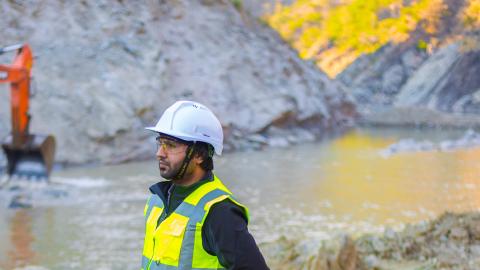Over the past two years, Midwesterners have heard a growing debate around carbon capture, transportation, and storage projects. Are these projects safe for families, farmers, and businesses? Why are they needed now, and are they new? These are all fair questions, and as a Midwesterner myself, these are the questions I would also be asking.
While my career has spanned over three decades in the military, government, academic, and private sector, I had the privilege to lead the federal agency responsible for carbon dioxide pipelines. PHMSA, as it is known in Washington, stands for the Pipeline and Hazardous Materials Safety Administration.
PHMSA is charged with ensuring the safe and secure transportation of anything hazardous by air, land, rail, sea, and via the nation’s 3.3 million miles of pipelines. They also run the “811 Call Before You Dig” program in partnership with many others to prevent damage to all underground infrastructure.
Based on my own firsthand experience running PHMSA, I can say with certainty that pipelines are the safest way to transport large amounts of gas and liquid products because of the federal government’s extensive and comprehensive regulations that are in place. Residents and communities across the Midwest and beyond should be confident carbon dioxide (CO2) pipeline projects will operate safely. This is important as we move forward in deploying technologies aimed at reducing pollution and carbon emissions.
For decades, PHMSA’s team of professional civil servants has utilized science and data to regulate all safety and environmental aspects of pipeline transportation. This science-based approach includes working in close collaboration with state agencies, safety advocates, and other stakeholders. These safety regulations address pipeline design, construction, operations, maintenance, integrity management, public awareness, emergency response, and more.
The agency’s responsibilities include oversight over CO2 pipelines. While these types of pipelines may seem new to some, regulated CO2 pipelines have been operating for nearly four decades, and the US operates more than 5,000 miles of pipelines today. Moreover, these pipelines are crucial to the US doing its part to reduce greenhouse gas emissions as good stewards of our environment.
The regulations in place governing pipelines provide multiple layers of protection. During construction, federal regulations require the pipeline be buried at least three feet below the surface and X-ray inspections completed on at least 10% of the welds to ensure they are constructed properly.
Importantly, one of the carbon capture projects being proposed, Summit Carbon Solutions, has proactively indicated it will exceed those regulations by burying its pipeline at least four feet below ground and conducting X-ray inspections on 100% of its welds.
In addition, before operations of the pipeline can begin, multiple tests must be completed to confirm the quality of the construction and integrity of the system. Additionally, the operator and PHMSA regularly monitor for performance and conduct a wide range of inspections to ensure it is operating as it should and meeting all safety requirements.
For example, pipeline companies utilize an Integrity Management Program that continually collects and analyzes data like how a primary care physician would monitor a patient’s long-term health. This includes evaluations of the design of the pipeline system, the construction of that system, and, once complete, the monitoring of how that system is operating.
The Integrity Management Program is akin to a proactive and preventative health care program for pipelines, designed to prevent future incidents.
Summit Carbon Solutions and others will have to comply with all these regulations, and I am personally pleased that the company has committed to applying this approach to the entire line. This is an important distinction because federal regulations do not require them in areas of low populations or otherwise remote from waterways and human development.
There is a wide range of other programs and inspections providing this type of holistic long-term analysis, including Control Room Management inspections governing the systems used to monitor and control pipelines remotely.
I could go on, but I think you get the point. These layers of protection, along with many others, including ongoing inspections and audits by federal personnel, work together to protect the public and the environment.
Those who say we need to wait for more comprehensive regulations either do not fully understand the comprehensive nature of our current pipeline safety programs or are simply using this argument to cover the fact that they are unlikely to support a pipeline project even if it were gold-plated.




















